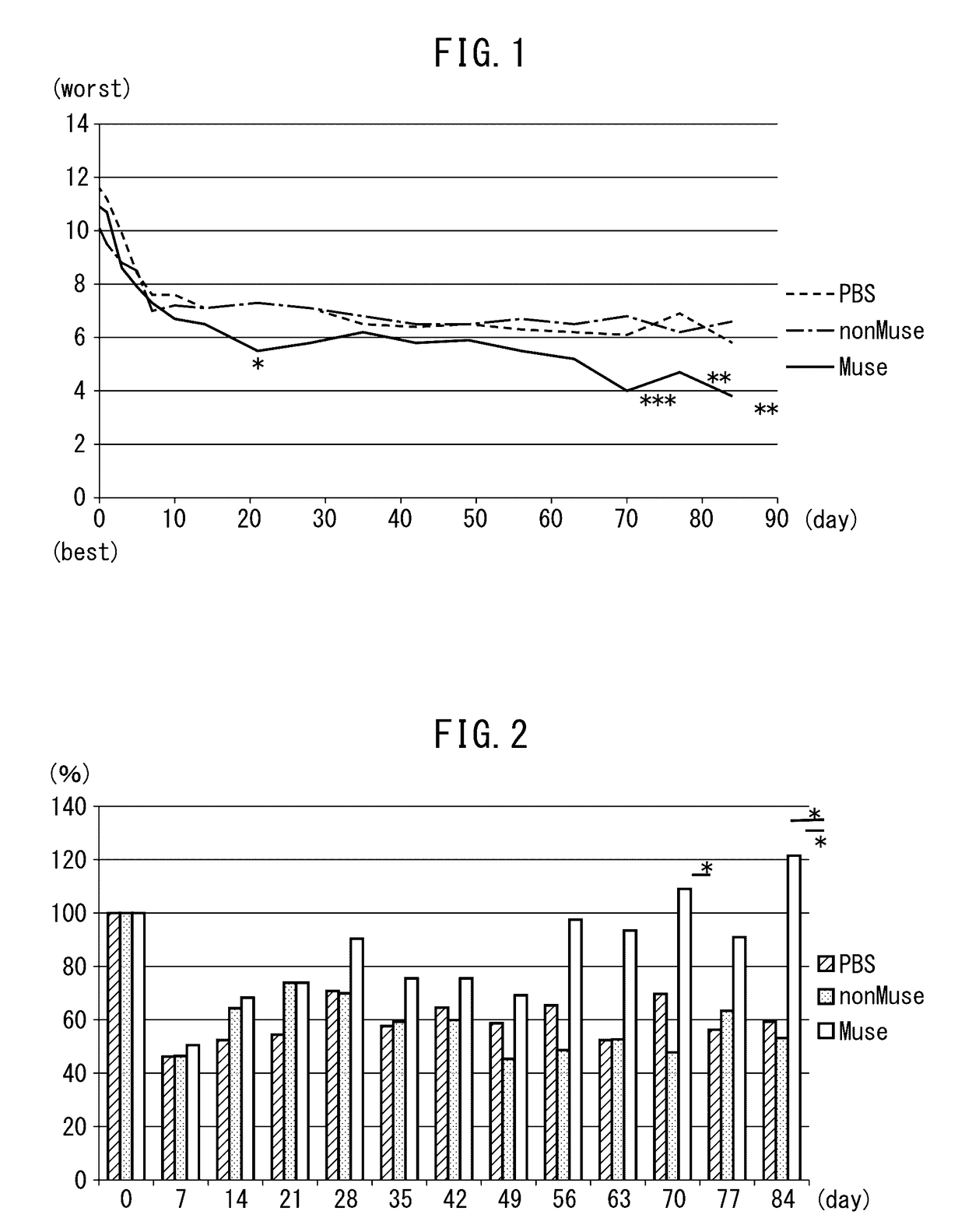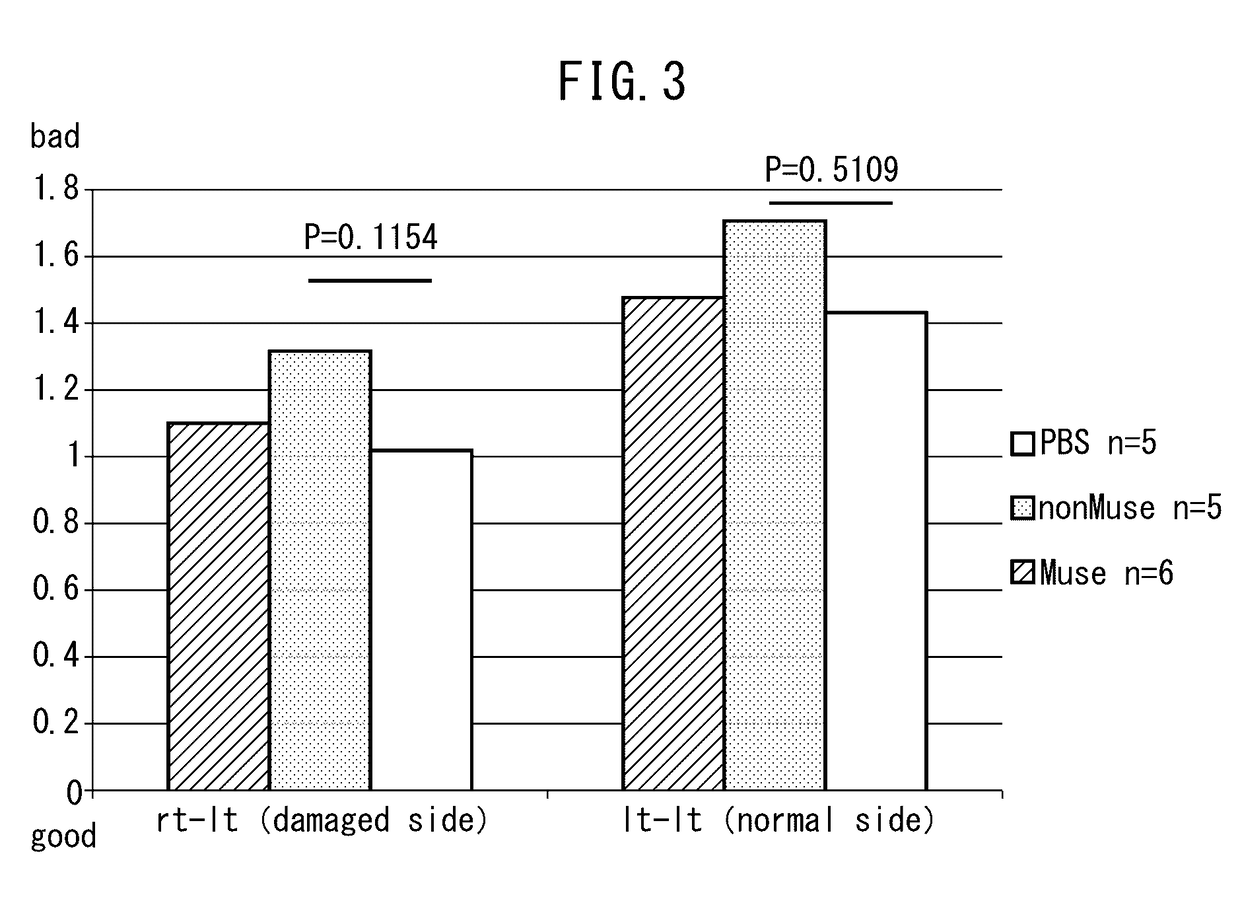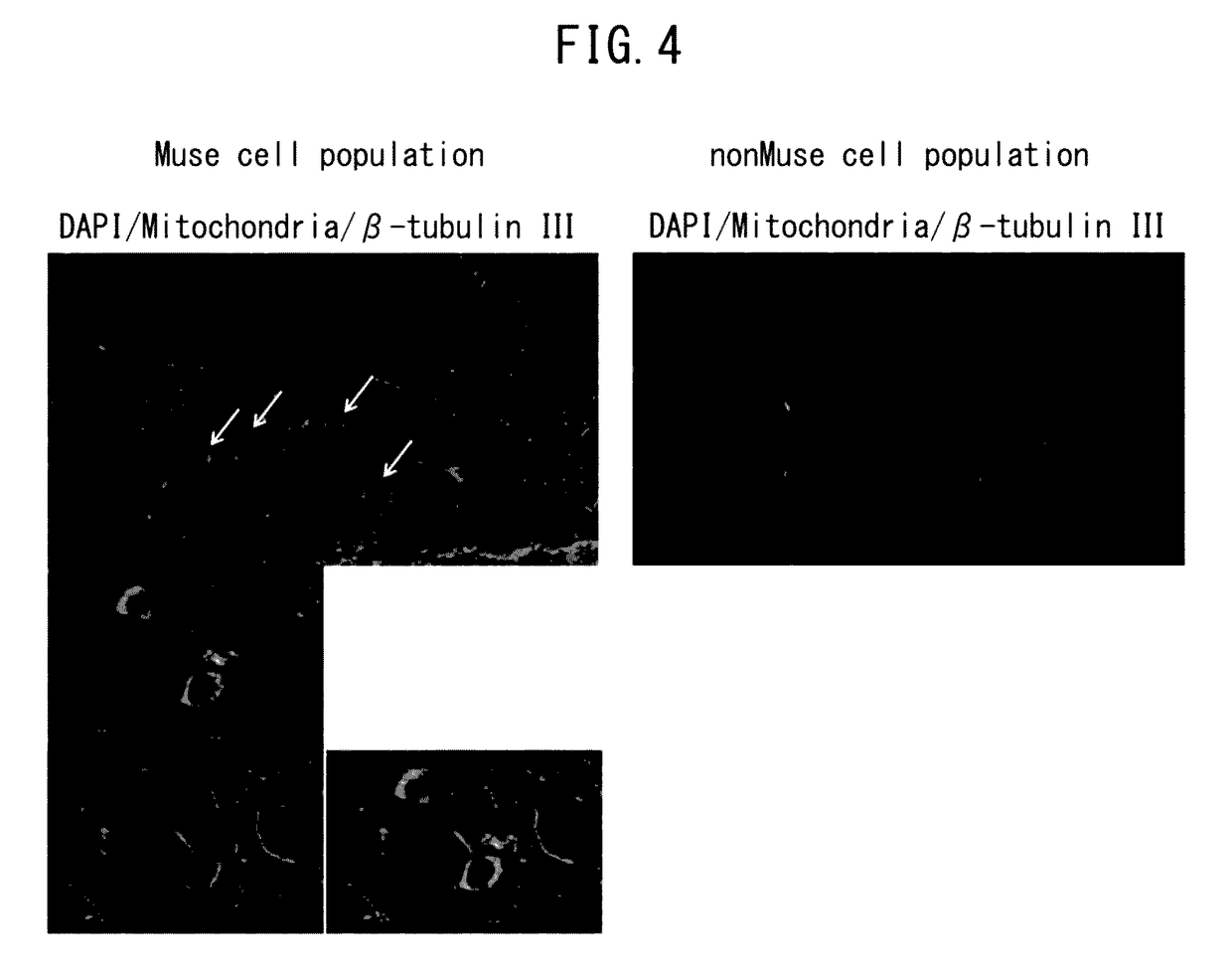Pluripotent stem cell for treatment of cerebral infarction
a stem cell and cerebral infarction technology, applied in the field of cell preparations, can solve the problems of not being able to obtain anticipated therapeutic effects, not being able to demonstrate adequate therapeutic effects, and being unable to achieve the degree of functional recovery of the central nervous system of a patient, so as to restore or return to normal brain function. the effect of the degree of functional recovery of the central nervous system of the patien
- Summary
- Abstract
- Description
- Claims
- Application Information
AI Technical Summary
Benefits of technology
Problems solved by technology
Method used
Image
Examples
example 1
on of Rat Cerebral Infarction Model
[0045]The “Regulations for Animal Experiments and Related Activities at Tohoku University” were strictly observed for the experimental protocol using rats in the present example, and experimental animals were prepared in accordance with these regulations under the supervision of the Tohoku University Experimental Animal Center. More specifically, a rat cerebral infarction model was prepared by inserting an embolus from the carotid artery of Wistar rats (males, age 10 weeks) and occluding a portion of the cerebral blood vessels (such as the middle carotid artery (MCA)). Subsequently, the embolus was extracted, the vessel was reperfused, and the rats were then used in the following experiments as a cerebral infarction model. Furthermore, the status of cerebral infarction was confirmed with brain tissue sections (following TTC staining). In addition, an immunosuppressant (FK506) was administered to the cerebral infarction rats prior to cell transplant...
example 2
on of Muse Cells
[0046]Preparation of human Muse cells derived from human fibroblasts was carried out in accordance with the method described in International Publication No. WO 2011 / 007900. More specifically, adhesive mesenchymal cells were cultured from human bone marrow fluid and after the cells proliferated, Muse cells or cell populations containing Muse cells were isolated by FACS as SSEA-3-positive cells. In addition, non-Muse cells consisted of a cell group negative for SSEA-3 present among the aforementioned mesenchymal cells, and were used as a control. Subsequently, the cells were adjusted to a prescribed concentration using phosphate-buffered physiological saline or culture liquid, and were used to evaluate the effects of Muse cells on brain function in the rat cerebral infarction model as indicated below. Furthermore, in the case of using cells obtained by culturing mesenchymal cells such as bone marrow-derived mesenchymal cells as a population of Muse cells, all SSEA-3-p...
example 3
n of Brain Function by Transplanting Muse Cells
[0047]The cerebral infarction rats prepared in Example 1 were divided into three groups, and Muse cells (1×104 cells, 2 μl PBS at 3 locations), non-Muse cells (1×104 cells, 2 μl PBS at three locations) or physiological saline (6 μl) were injected directly into the cerebral parenchyma on day 2 following reperfusion. Subsequently, improvement of rat motor function was evaluated over time and cell kinetics were analyzed after a prescribed amount of time.
(1) Comprehensive Evaluation by Neurological Severity Score (NSS)
[0048]Various types of brain function disorders (such as paralysis, sensory disorders or vision disorders) were evaluated using the neurological severity score (NSS) (Chen, J., Stroke, Vol. 32, p. 1005-1111 (2001)) in the rats transplanted with cells as described above for a period of three months following transplant. In this evaluation using NSS, points were assigned for changes in motor function and as a result, a maximum s...
PUM
 Login to View More
Login to View More Abstract
Description
Claims
Application Information
 Login to View More
Login to View More - R&D
- Intellectual Property
- Life Sciences
- Materials
- Tech Scout
- Unparalleled Data Quality
- Higher Quality Content
- 60% Fewer Hallucinations
Browse by: Latest US Patents, China's latest patents, Technical Efficacy Thesaurus, Application Domain, Technology Topic, Popular Technical Reports.
© 2025 PatSnap. All rights reserved.Legal|Privacy policy|Modern Slavery Act Transparency Statement|Sitemap|About US| Contact US: help@patsnap.com



